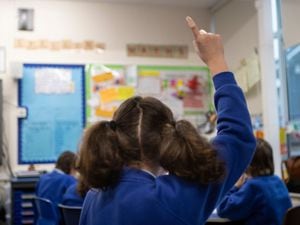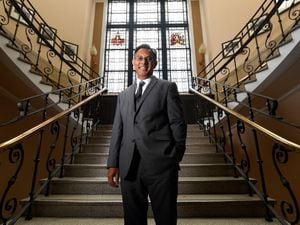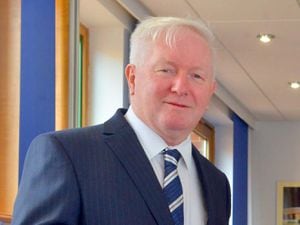Over 150 schools across Black Country and Staffordshire found to be close to or over capacity
It can be an annual bun fight, anxious parents fighting to get their children into the right school – and to avoid the wrong one.

Popular schools can often be over-subscribed, while those that have a lesser reputation can have vacancies.
Today figures reveal the extent of the issue in the Black Country and Staffordshire, where 165 schools were found to be operating close to or over capacity in the 2021-22 academic year.
According to the Educational Policy Institute, the schools were operating at levels where the number of pupils enrolled is greater than or equal to its number of places.
The figures have been broken down to each area, with Sandwell found to have the most schools operating at these levels with 31, and of them 27 were primary schools and four were secondary schools.
Across England, 17 per cent of primary schools were full or over capacity while 23 per cent of secondary schools, including sixth forms, were at or above capacity last year.
The Department for Education said most state schools that exceeded their capacity were over by fewer than 10 pupils. About seven per cent of schools exceeded their capacity by 10 or more students.
Jon Andrews, Education Policy Institute head of analysis, said the proportion of schools operating at over capacity is likely to fall in the coming years, simply because there will be less children to go round.
"Pupil numbers are already declining in primary, and will soon peak in secondary and special schools. The Department for Education estimate that the total pupil population will fall by over 900,000 between 2022 and 2032," Mr Andrews added.
He warned the result of schools operating close to or over capacity is additional demands on teaching staff and pupils being left without their preferred choice of school.
He said: "With our research having revealed that pupils from more affluent backgrounds more frequently succeed via these routes of appeal, it’s likely that disadvantaged pupils will suffer to a greater extent from the effects of schools being over capacity.”
Geoff Barton, Association of School and College Leaders general secretary, said Ofsted grading can lead to a two-tier system. Those with a 'outstanding' or 'good' rating will attract applications while those with lesser grades miss out, even though they may have done much work to improve performance.
Mr Barton said: "The bigger issue is that this situation is often driven by Ofsted judgements rather than a shortage of school places in the system as a whole because many parents apply for schools with ‘good’ and ‘outstanding’ ratings.
"It drives up property prices in certain areas and stigmatises schools in other areas."
He said the system "desperately" needs to be reviewed and added struggling schools need more support.”
A Department for Education spokesperson said it has created almost 1.2 million school places since 2010 and added many more are "in the pipeline".
They said: “The vast majority of schools listed as overcapacity are either at or just over recorded capacity, and we work closely with local authorities to make sure they offer a school place to every child in country.”
Here is the situation in each local authority area:
Wolverhampton
Department for Education figures show 23 schools were at or over capacity in Wolverhampton in the 2021-22 academic year.
Of them, 20 were primary schools and three were secondary schools.
The figures show the most crowded primary school in Wolverhampton last year was Holy Trinity Catholic Primary School. The school had 227 students on roll and 212 places – meaning it was over capacity by seven per cent.
The most crowded secondary school in the area was St Matthias School which had 863 pupils and 805 places last year. It was over capacity by seven per cent.
Walsall
Department for Education figures show 30 schools were at or over capacity in Walsall in the 2021-22 academic year.
Of them, 21 were primary schools and nine were secondary schools.
The figures show the most crowded primary school in Walsall last year was St Thomas of Canterbury Catholic Primary School. The school had 262 students on roll and 210 places – meaning it was over capacity by 25 per cent.
The most crowded secondary school in the area was The Streetly Academy which had 1,527 pupils and 1,341 places last year. It was over capacity by 14 per cent.
Dudley
Department for Education figures show 20 schools were at or over capacity in Dudley in the 2021-22 academic year.
Of them, 15 were primary schools and five were secondary schools.
The figures show the most crowded primary school in Dudley last year was Lapal Primary School. The school had 384 students on roll and 363 places – meaning it was over capacity by six per cent.
The most crowded secondary school in the area was Ellowes Hall Sports College which had 1,153 pupils and 1,100 places last year. It was over capacity by five per cent.
Sandwell
Department for Education figures show 31 schools were at or over capacity in Sandwell in the 2021-22 academic year.
Of them, 27 were primary schools and four were secondary schools.
The figures show the most crowded primary school in Sandwell last year was All Saints Church of England Primary School. The school had 419 students on roll and 369 places – meaning it was over capacity by 14 per cent.
The most crowded secondary school in the area was Q3 Academy Tipton which had 1,488 pupils and 1,438 places last year. It was over capacity by three per cent.
Staffordshire
Department for Education figures show 61 schools were at or over capacity in Staffordshire in the 2021-22 academic year.
Of them, 53 were primary schools and eight were secondary schools.
The figures show the most crowded primary school in Staffordshire last year was St Leonard's Church of England Primary School. The school had 128 students on roll and 105 places – meaning it was over capacity by 22 per cent.
The most crowded secondary school in the area was Codsall Middle School which had 521 pupils and 480 places last year. It was over capacity by nine per cent.





